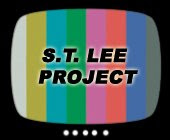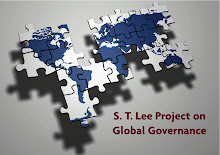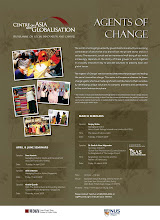Friday, September 18, 2009
Telenovela
CAG Senior Research Fellow Tess del Rosario argues in her new book Scripted Clashes - A Dramaturgical Approaches to Three Philippines Uprisings that the three collective people power uprisings in the Philippines which occurred over a time period of fifteen years (1986-2001) are "dramaturgical productions", each one governed by an underlying "scrip". Following is Tess' take on some of the key points in the book:
The study of collective uprisings in the past has suffered from an intellectual tradition that tends to equate social protest with crowd behavior --- a form of sociopathology endemic in societies experiencing social breakdown. This book challenges that perspective.
In looking at the three people power uprisings in the Philippines which occurred over a time period of fifteen years (1986-2001), I employ a Goffmanian perspective called “dramaturgy” --- a theoretical variant within “cultural constructionism” (Jasper 1997) that is largely premised on the idea that humans are “symbolic making creatures, who spin webs of meaning around ourselves . . . that we humans together create everything that we know and experience, or at least the interpretive frameworks through which we filter all our experience.”
In this book, I argue that the three collective uprisings are “dramaturgical productions”, each one governed by an underlying “script”.
The first two uprisings embody the larger moral vision among protestors and participants to a distinct social project called modernity. While Marcos himself sought to modernize the Philippine nation under an authoritarian framework, the failure of this experiment provoked an alternative vision in which modernization would continue under a democratic political system, thus the theme of “re-democratization” shaped the character and flavor of the modernity script of the first uprising.
As a “sequel” to the first, the second uprising of January 2001 carried the same moral vision, but reworked to suit the requirements of the 21st century.
The third uprising witnessed the massive mobilization of the so-called lumpen poor and elaborates on James Scott’s notion of the “hidden transcript” formed in the subterreneal regions of discourse among the poor and the marginalized. It is inspired by the Biblical Pasyon, the movies, and the telenovela.
I argue that this discourse can be best understood by looking at internal cultural categories of meaning that reside in religious beliefs, symbols and practices and are carried over to the cinema, and more recently, to the telenovela, which are then recreated and acted out during uprisings. This evokes a “tele-cinematic” effect.
The three uprisings are competing social dramas and the Edsa shrine is the “center stage” of re-enactment. I elaborate on the notion of “spatial agency” to argue for the role of social spaces in collective action, and to provide an instance in which a physical site becomes a locus for creatively addressing the tension between structure and agency. Finally, I conclude this study with a meditation on the dangers of dramaturgy and the possibilities of utilizing it as constructive social critique to promote social justice and to deepen humanistic concerns. [Tess]
Labels:
Asia
Subscribe to:
Post Comments (Atom)










No comments:
Post a Comment